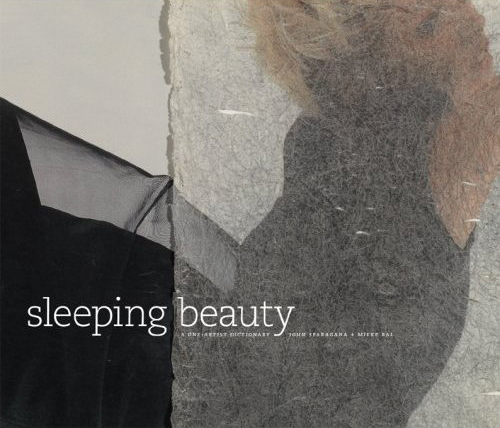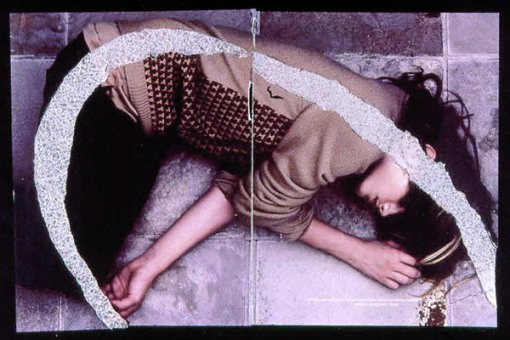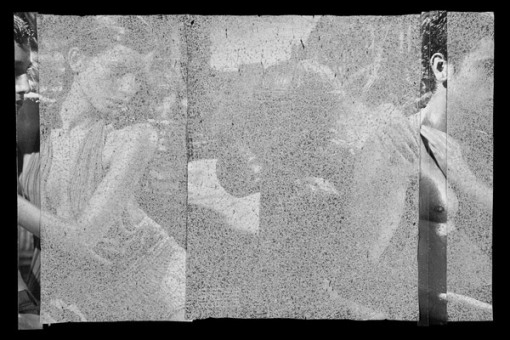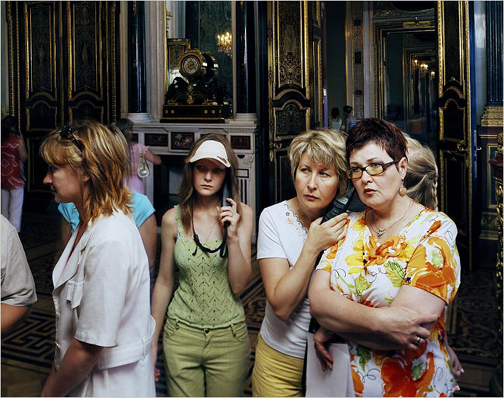One of my favorite books of the past year, Sleeping Beauty by John Sparagana (1, 2) and Mieke Bal, is at the center of an enviable launch party in Chicago Saturday afternoon. Corbett vs. Dempsey Gallery is hosting the official release, which is set to feature a short concert by Glenn Kotche. Best known as the drummer for Wilco, Kotche also performs and records as a solo percussionist; at the Sleeping Beauty event, he’s scheduled to perform two pieces by Minimalist composer Steve Reich. Sparagana’s work will be on view, and he’ll be there to sign books, but the press release I have encourages early arrival at this free event.

Sleeping Beauty is the first publication in the Project Tango series from University of Chicago Press. Project Tango is described as “a new series of experimental collaborations between artists and writers,” and if future titles sport the creative integrity of the Sparagana + Bal pairing, they’ll quickly become essential acquisitions. [Disclosure Alert: I have known John for nearly a decade, and although we’ve never been close friends, we keep in touch sporadically, and I’m a longtime fan of his work. This mildly embarrassing piece I wrote in 2002 includes a short review of a great show he created that year for FotoFest.]
Having collaged, altered, and otherwise obscured images from popular magazines since the late 1990s, Sparagana has spent the past several years “distressing” images of desire, glamour, and wealth, as he dubs his signature technique. At its most reductive, “distressing” is another word for “crumpling,” but to call it that would be a gross oversimplification. Sparagana rubs, wrinkles, and weathers his carefully-chosen images until they’re as frail as ancient texts, and one imagines that they could turn the whole work or art to dust by breathing on it too hard. In the artist’s hands, the paper’s inky coating cracks into a dense latticework of crystallized webs, draping the original images in blankets of crackled gauze. As Mieke Bal writes in Sleeping Beauty, “The act of destruction is reiterated, so much so that, at some point, the sheet of paper becomes soft, voluptuous to the touch, flexible like a fabric such as satin. The image loses its predictable aspect. It becomes enigmatic, hard to read as what it was, novel and unheard of.”
 While it’s tempting to read this process as a simple, if violent, metaphor for media critique, this interpretation doesn’t account for the countless hours of tender attention Sparagana spends on each work, nor does it address the erotic allure of his primary imagery. These elements are made clearer in later works, where the artist collages distressed images with their pristine orginals, creating—as Bal rightly points out—”interventions” in the manufactured seduction of the fashion spreads. These disruptions jolt our attention, scattering our attention onto three simultaneous fields of meaning: the glamorous pull of the original image; the fragile tactility of the distressed areas; and the startled awareness of the original’s complex visual and cultural coding. It becomes a visual experience whose closest analogy is the short moment when, awakening from a dream, one tries to fall back asleep so that the rewards and riches of our slumbering fantasties might manifest themselves completely.
While it’s tempting to read this process as a simple, if violent, metaphor for media critique, this interpretation doesn’t account for the countless hours of tender attention Sparagana spends on each work, nor does it address the erotic allure of his primary imagery. These elements are made clearer in later works, where the artist collages distressed images with their pristine orginals, creating—as Bal rightly points out—”interventions” in the manufactured seduction of the fashion spreads. These disruptions jolt our attention, scattering our attention onto three simultaneous fields of meaning: the glamorous pull of the original image; the fragile tactility of the distressed areas; and the startled awareness of the original’s complex visual and cultural coding. It becomes a visual experience whose closest analogy is the short moment when, awakening from a dream, one tries to fall back asleep so that the rewards and riches of our slumbering fantasties might manifest themselves completely.
Corbett vs. Dempsey, 1120 N. Ashland Ave. 3, Chicago
Saturday, January 31, at 4pm

